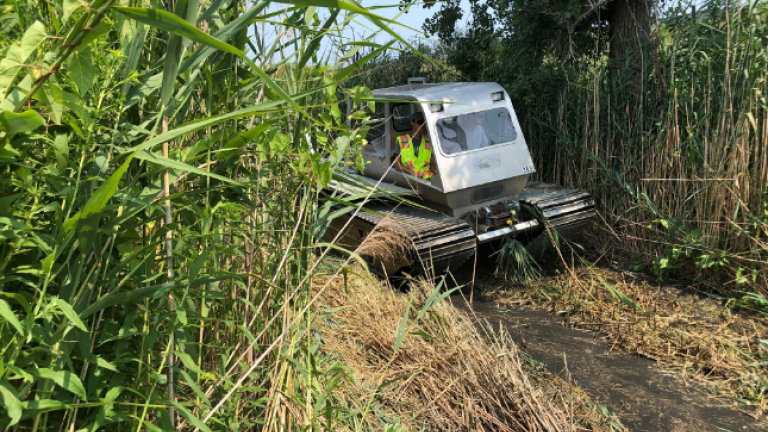When talking about invasive species there is important terminology to better make sense of where invasive species stand legally and the threat they have to Michigan's environment, economy, and/or human health. The terms to be aware of are “prohibited,” “restricted” and “watch list”.
Regulations are put in place as a means of reducing the introduction and preventing the spread of new species by limiting commerce. Prohibited and restricted invasive species are unlawful to possess, introduce, import, sell or offer that species for sale as a live organism in Michigan except under certain circumstances, which can be read in further detail here. Prohibited species are not widely distributed in the state and because of this management and control techniques are not readily available. An example of a prohibited species would be Japanese knotweed, which is in parts of Michigan and is extremely difficult to eradicate.
Restricted species are established in the state and measures of control and management have already been implemented. An example of a restricted species would be Phragmites (common reed) which is commonly found in ditches or along roadsides. Control measures such as herbicide or mechanical removal have been used to manage these species.
A watch list invasive species is one that has been identified as posing an immediate or potential threat to Michigan’s environment, economy, or human health. Watch list species have either never been confirmed in the wild in Michigan or have a limited known distribution. An example of a watch list invasive species would be water lettuce, which has been detected in a few Michigan waterways and is still commonly sold in garden nurseries for use as a pond plant.
If water lettuce becomes widespread in wild waters it can reproduce rapidly, creating thick mats that interfere with recreation and could end up costing a lot to control. It’s important to note a species can be both on the watch list and prohibited like the red swamp crayfish. Red swamp crayfish have been detected in Michigan and are an immediate threat to the environment and economy. It is also unlawful to possess, introduce, import, sell, or offer red swamp crayfish for sale as a live organism. In 2022, the LSC CISMA plans to continue early detection, rapid response and outreach efforts for watch list invasive species like water lettuce and red swamp crayfish. For more information, visit our website at lakestclaircisma.com.
Guest blog provided by the Lake St. Clair CISMA.
About the Lake St. Clair CISMA
The Lake St. Clair CISMA is a partnership of local and state governments, non-profits, and educational institutions founded in 2015. United in their goal to prevent, detect, and control priority invasive species, the LSC CISMA operates within the vast boundaries of the Lake St Clair Watershed covering 2,100 square miles. The LSC CISMA is funded by the Michigan Invasive Species Grant Program (Michigan.gov/Invasives).
Six Rivers Land Conservancy is a 501 (c)(3) nonprofit whose mission is to conserve, sustain, and connect natural areas, lands, and waters that make the places we live special. Six Rivers has currently protected over 2,000 acres in Oakland, Macomb, St. Clair, Lapeer, and Genesee Counties and is the fiduciary for the Lake St. Clair CISMA. If you'd like more information about our work, volunteer opportunities, or to make a donation, please visit sixriversrlc.org.







